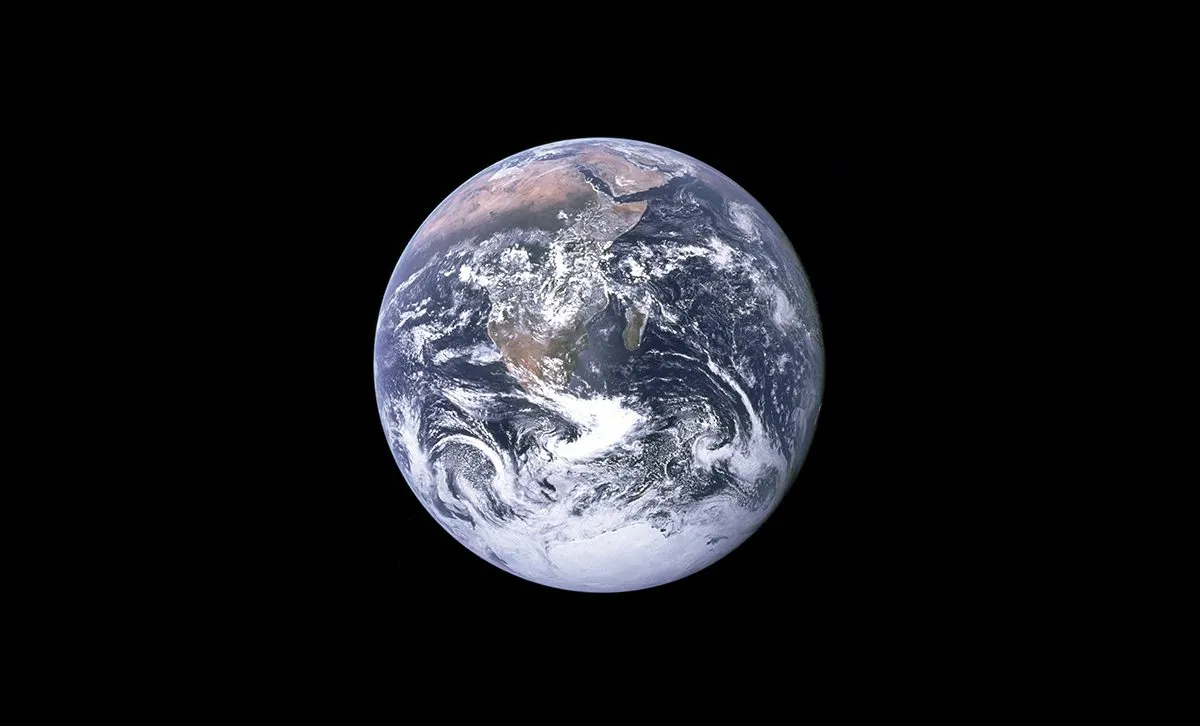From the offset, we need to state that no, of course Earth isn’t donut-shaped.
That can be proved in all manner of ways, but the best and most obvious evidence we have for Earth’s true form is photographic.
We have pictures of Earth taken from space, and it is patently, undeniably round.

Of course, Earth isn’t entirely round. It’s not a sphere, it’s an oblate spheroid – a sphere that's been flattened slightly at the top and bottom.
Which, somewhat ironically, means the Earth kind of IS donut-shaped… if the donut in question is one of the round ones with a jam or custard filling.
But when people talk about a donut-shaped Earth – which they sometimes do, more on which in a minute – they’re talking about ring donuts, which would technically be described as ‘toroidal’ in shape.
And no, Earth isn’t a toroid. See above.

Science of donut planets
It’s still an interesting question, though, because it raises three further questions:
- Could a toroidal planet exist?
- What would life be like on such a planet?
- Why would anyone think Earth was toroidal in the first place?
The answer to the first question, perhaps surprisingly, is "Yes, possibly, a donut-shaped planet might exist".
We don’t know of any toroidal planets, and there’s nothing so far about any of the many exoplanets that we’ve discovered (but know little about) to indicate they might be such a shape.
But that doesn’t mean a toroidal planet couldn’t exist.
Various astronomers both amateur and professional have, in fact, spent a great deal of time and mental energy proving that such a planet is feasible, though it would need to be somewhat larger than Earth.
It wouldn’t be a perfect ring with a perfectly circular cross-section, either.
Instead, it would need to be slightly egg-shaped in cross-section, thicker at the outer edges than it is towards the centre (the hole in the donut).
We won’t delve deep into mathematical equations here, but if you’d like to see some workings that led to these conclusions, try this article by Oxford professor and mathematical modelling expert Anders Sandberg, or this one by an anonymous blogger.

Living on a donut Earth
So if a toroidal planet can exist… what might life there be like? How would conditions on a donut-shaped Earth differ from those we experience in real life?
Such a planet would still have an equator and poles.
Actually, it would have an inner and outer equator – one on the inside of the ring, one on the outside – but just as on Earth, the equator would wrap right around the donut planet’s ‘waistband’.
And the North and South Poles would still be at the top and bottom, respectively.
It’s just that each pole would be a very narrow ring on the donut’s uppermost and lowermost surfaces, as opposed to a specific point as it is on Earth.
Gravity would work somewhat differently on a donut Earth, though.
On our regular, spherical Earth, gravity is the same wherever you go, whereas on a toroidal planet it would be stronger towards the poles and weaker towards the equator.
This could actually be an advantage: various industrial, mechanical or scientific processes could benefit greatly from having access to a lower-gravity environment.
You can see how it might be a problem for the organisers of the Olympics, though.
Imagine, for instance, trying to establish a meaningful high jump record when athletes at one Games were experiencing only (e.g.) 0.8975 times the gravity than athletes had to deal with at the last one!

Days would work differently, too. If you lived on the outside of the donut, things would be much as they are now, but if you lived towards the inside of the ring, you’d often find yourself eclipsed by the other side.
Conversely, you’d also often be lit up by sunlight reflecting off the other (illuminated) side, much as on Earth we’re illuminated at night by sunlight bouncing off the Moon.
The only difference is that, for inner ring-dwellers on our putative donut Earth, this effect would be much greater, because the source of the illumination (the other side of the ring) would be both much larger and much closer than the Moon is to us.
Speaking of moons, a donut-shaped planet could still have one or more of them, though depending on the shape and size of the ring you might see some bizarre orbits – in some models, for instance, any moon would constantly bob up and down inside the central hole!
That’s the not the only area where the precise physical characteristics of our hypothetical torus make a big difference, either. The picture can look very different depending on:
• the overall size/mass of the donut
• the planet’s degree of tilt (if any) relative to its orbit
• whether it’s truly donut-like (a ‘fat’ ring with a small diameter and a small hole in the centre), more akin to a hula hoop (a ‘skinny’ ring with a large diameter and a much larger hole in the middle) or somewhere in-between.
To sum up: on a donut Earth, conditions would be different from those we experience on our regular Earth, but not so different – according to most astronomers that have dived into the question – to preclude the existence of life.
So that’s our first two questions answered.
Yes, a toroidal planet could feasibly exist, and depending on its exact structure, life there could still be possible, and in some cases needn’t look much different from life on Earth.

The donut Earth myth
That just leaves the third question: why have people spent so much time discussing whether Earth might be donut-shaped, when it quite clearly isn’t?
And the answer to that seems be that it all comes down, originally, to a hoax/spoof post on the internet!
Which reminds us of the famous Green Moon myth that started a few years back.
The idea of a toroidal Earth was first mooted in 2008, in a post on the messageboards of the Flat Earth Society.
That in itself should have been enough to tell people that it wasn’t a serious suggestion, but that didn’t stop another user called Varaug, in 2012, posting a lengthy discussion of what such a planet might look like.
Since then, the idea has acquired legs, and ‘donut Earth’ memes will doubtless be part of our reality for the foreseeable future. But Earth definitely isn’t donut-shaped.
Of course, some scientists HAVE suggested that Earth may, in its earliest history, have very briefly assumed a donut-like shaped before cooling and settling down into its current near-spherical form.
And then there’s the recently discovered donut-shaped object lurking inside Earth’s magma, which has yet to be properly explained.
But those aren’t the same thing.

